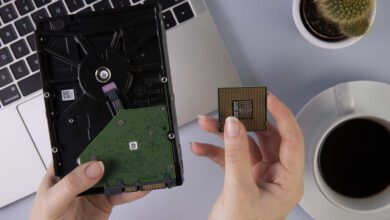The First Computer Virus in the Philippines: The Love Bug


Introduction
If there is one thing that would come to mind upon mention of computer viruses, First Computer Virus in the Philippines be but a few or at most ten and one of them is the ILOVEYOU virus also known as the Love Bug virus, and it originated in the Philippines though computer viruses had been circulating all over the world for several years already. This virus did not only change the map of technologies in the world but also introduced Philippines in the world of cybercrimes, although not in a very positive way.
Understanding Computer Viruses
Definition of a Computer Virus
A computer virus is a sub- class of malicious software programs whose characteristics are to change the computer behavior in a manner not desired by the user. Like any virus it is capable of reproducing itself and thus convert one computer after the other into virus carriers, which may mask themselves as genuine applications or documents. Once a virus has been turned ‘on’ it is capable of performing explicitly malicious activities, erasing data and accounts, stealingpin numbers, and the like, or effectively disabling a system.
How Computer Viruses Work
Computer viruses operate in a very unique manner whereby they become a part of other programs or files. This virus is activated when the infected file is opened or the program is run and then starts its destructive activity. It may then spread by sending copies of it into other files or programs, or by using particular weaknesses in a network to propagate to other computers. This can be done in different methods for instance through e-mail attachments, downloads, and even more through infected removable storage devices for instance the USBs.
Common Types of Computer Viruses
There are several types of computer viruses, each with its own method of operation and impact:
1. File Infector Viruses: Such viruses link themselves with executable files such as . exe or . com files. This is whereby the virus gains control of the system when the file containing the virus is opened and it begins to propagate to other exe files in the system.
2. Macro Viruses: These are written in the macro language of software applications such as the Word or excel among others. They normally reproduce themselves through infected files and can initiate damaging or copying their infected form to other files as soon as the document is opened.
The Emergence of the First Computer Virus in the Philippines
Introduction to the “Love Bug” Virus
Perhaps one of the oldest and most destructive viruses is the so called “Love Bug”, or “ILOVEYOU” virus. It was first released in May, 2000 and was soon identifying hosts all over the world and creating havoc. What made the Love Bug more notable was the fact that it began with Philippines as this can be considered as the first country that produced a large scale computer virus. The virus was in a form of an email with the actual message saying that it was a love letter; the subject of the email was ILOVEYOU and had a file attached to it with the name LOVE-LETTER-FOR-YOU. TXT. VBS. First Computer Virus in the Philippines would commence by corrupting millions of computers all over the world.


Background of the Virus and Its Creator
Love Bug virus was developed by a Filipino computer programming student Onel De Guzman. At the time de Guzman was a college student at AMA Computer College in Manila. Panack described the virus as a product of his thesis, on hacking the passwords of internet connection as those were scarce and costly to get in Philippines at the time.
Onel de Guzman created the virus at the help of Visual Basic Script (VBS) that let him develop a worm that can spread through email. The aim was said to have been to make a worm intended to assist him and others obtain free Internet, which then bred a worm that attacked computer systems across the world, costing an estimated amount of billions of dollars.
Creation and Spread of the Love Bug Virus
The Role of Onel de Guzman in the Creation of the Virus
The said Love Bug virus was initiated by Onel de Guzman who was the co-creator of the virus. To replicate the virus, de Guzman used Visual Basic Script (VBS)a language that enables the scripting of computers’ automatic operations; he engineered the virus to function as a worm or a program that initiated its replication process on its own and without much help from the user. His intention was to devise a utility that can obtain the internet access credentials from users unsuspectingly. The virus was spread in the form of emails and it was disguised in the form of a fake love letter to which users would open the attached document and invitation to further spread the virus.
How the Virus Spread Across the Globe from the Philippines
Love Bug virus propagated with astonishing viral velocity because of high ratio of social engineering and rapid popularity of email at that period. It is a virus that originated in Philippines and it was spread in the country for the first time on fifth of May in the year 2000. It then advanced through the email systems by forwarding itself, to every contact in the infected computer’s address list, and expanded the infection exponentially.
In few hours of the video’s release, the virus has gone beyond the Philippines to Asia, Europe, and finally evading the quadrile containment to wash up on the shores of the United States. People from all these different sectors such as major corporations, government agencies, as well as private individuals were not exempted. The virus affected important application areas and hence, disrupted the systems causing global losses of about $10 billion.
The Love Bug sent a wave of risk to early formulated email systems and the complainability of to computer viruses. It also showed how one single, well constructed virus could take advantage of the human psyche and spread across the entire world in a matter of hours thus making Love Bug one of the most effective and pernicious viruses known to man.


Cybersecurity Evolution in the Philippines
1. Developments in Cybersecurity Post-Love Bug
I would like to highlight that the “Love Bug” virus which has been called “ILOVEYOU”. Appeared in the year 2000 was a wake-up call for the Philippines and the entire world. It drew attention to weaknesses in information technology network and risk of loss on a large scale. In response to this, several developments in cybersecurity took place in the Philippines:
• Increased Awareness: This event brought the issue of cybersecurity into more focus to not only the general, population but also more so to organizations. There was a major trend towards better adjustment of naming systems. As well as moves to increase awareness and action concerning digital health in general.
• Enhanced Security Measures: He further added that the growing economic threats necessitated that companies. And institutions adopted better security measures for such threats. This includes areas such as installing antis-virus, firewalls and security check up to ascertain company’s security.
• Cybersecurity Education: Awareness programs and measures were initiated to arm the society. With information regarding permissible measures in cyber security. This also was helpful in creating ‘knowledge capital’ for the workforce and thus combat emerging risks.
2. Establishment of Cybersecurity Protocols and Agencies
In response to the growing need for structured cybersecurity measures, several protocols and agencies.
• National Computer Emergency Response Team (CERT-PH):
Created with an aim to back up when it comes to addressing and handling of cyberthreats. It has an important function of management of response to cyber threats and cyber vulnerabilities.
• Cybercrime Investigation and Coordination Center (CICC):
Established to Co-ordinate the fight against cyber criminals. It operates on formulation of policies, enforcement of laws and raising awareness on issues to do with cyber threats.
• Department of Information and Communications Technology (DICT):
The DICT can also be involved in formulation and implementation of the national polices on cyberspace security. It is focused on increasing the protective capability of the country against cyber threats and cooperation with the partners.
• It included Cybersecurity Act of 2015:
This was a law that gave legal measures for combating cybercrime and ensuring security to vital computerised network. They laid down measures of setting up cybersecurity and its policies and standards.


Who created the first computer virus?
Creeper is considered to be the first computer virus in history which was programmed by Bob Thomas in 1971. Bob Thomas was a programmer who was employed with BBN Technologies that was one in the growth of the internet. The Creeper virus was actually created as an experimental portable program that would be able to self replicate. Across a network rather than a virus that is built to be malignant.
What was the first computer virus in philippines called?
I believe that you are talking about C-Miller or another very first virus, which appeared in the information world. The “C-Miller” virus was one of the first of the Philippine viruses but there were other Philippine viruses before it. If you have more details or more information about a certain virus let me know!
What was the first computer virus in philippines and what was the cause
The first high-profile virus created in the Philippines is the ILOVEYOU or Love Bug that was propagated last May, 2000.
Cause of the Love Bug Virus
Love Bug virus was discovered by Onel de Guzman who is a Filipino computer programming student. The reason why it was conceived in the first place was a supposed intention of hacking on passwords. Which was rather expensive and hard to come by in the Philippines in the past. Onel de Guzman came up with the virus while on his college thesis as a way of testing the idea. However, the virus got out of hand once the virus was let out in the world.
First computer virus made by Pakistan
The first computer virus that is said to be the handiwork of a Pakistani is the “CBrain” virus. It was created in 1986 by a Pakistani computer science student called Basit and Amjad Farooq Alvi. CBRAIN was IBM PC boot sector virus; boot sectors of the Floppy disk and then affect other disks. This was intended as a demonstration of what malware could be employed for and it was not malicious.


Conclusion:
As a recap of the history of computer viruses, it is also important to the first officially documented case. Studying the history of computer viruses including viruses that had emerged in the Philippines. Its important in analyzing the processes of developing antiviral protection and measures, threats created by hackers.
These early viruses are noteworthy because they serve to identify future threats and their prevention. Hence the need to remain watchful in the ever developing field of computer security.
Read More: For This Type Of Articles





